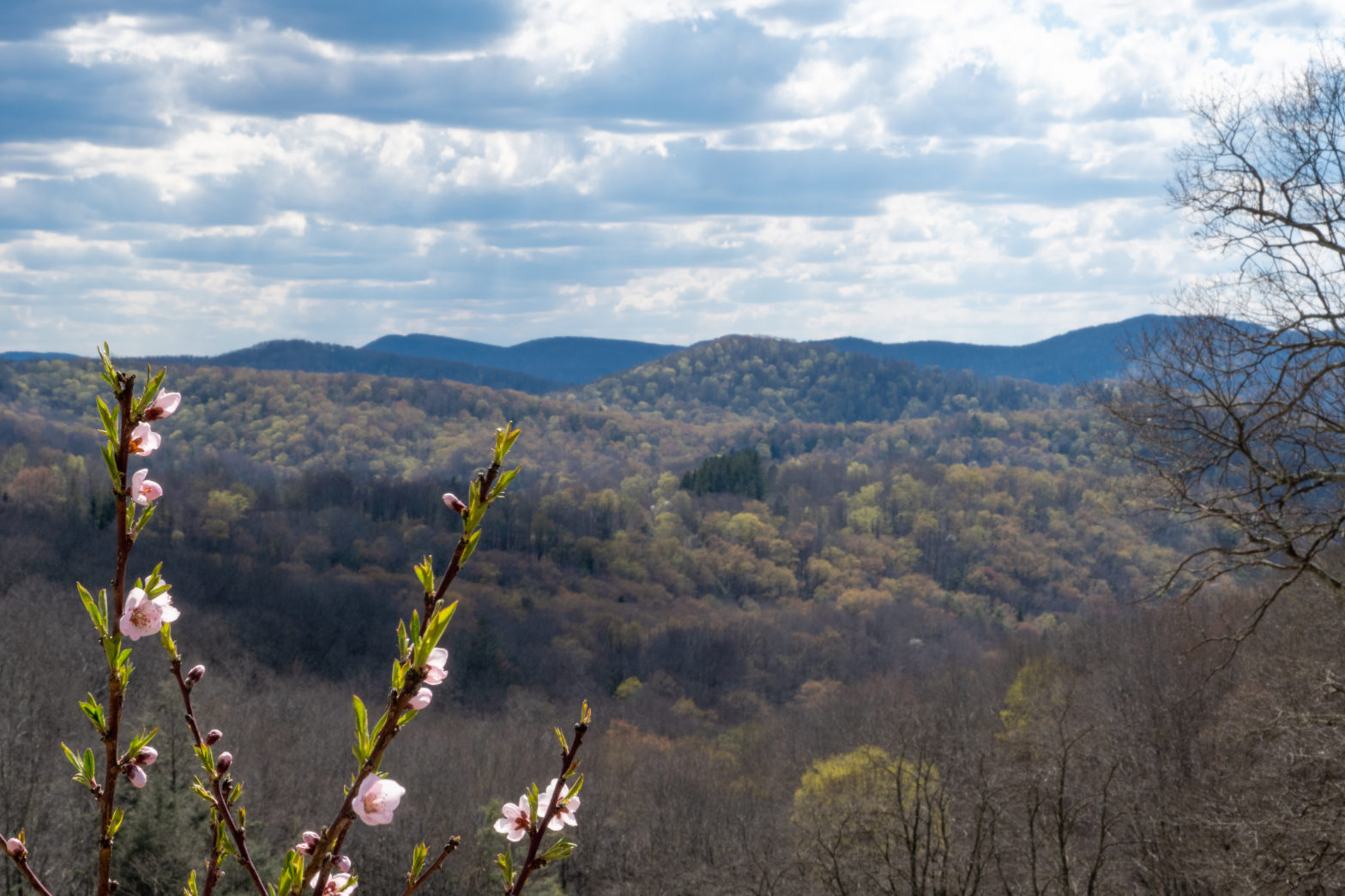As the ground starts to thaw from its deep winter’s slumber, nature awakens in West Virginia. Cool, dewy mornings turn into warm afternoons, maple sap steadily flows from the maple trees, new growth buds throughout the mountains, and wildflowers begin to erupt along the hillsides and forests. Spring is sweet, especially in Randolph County.
As people living here in the Appalachian Mountains, we have many customs and traditions associated with a much-awaited spring. Several of these traditions center around food. Some of the best places in the nation to find wild and delectable foods are in our backyards. Our warm and wet growing season, as well as our extensive forests, contribute to Appalachia being a forager’s paradise. Many of us have our “special spots and secret hills and hollows” where we can find hidden stashes of ramps, mushrooms, and other wild plants – it’s why we are flavored by nature.
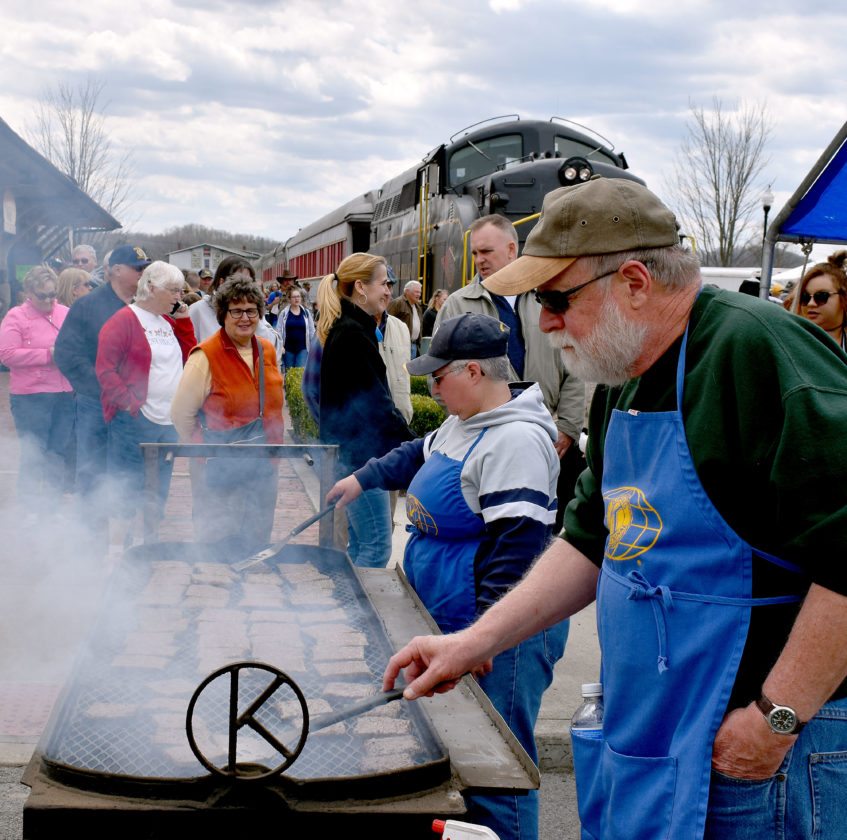
From maple and ramp festivals to local farmers’ markets and the welcoming blossoming landscape that springs to life everywhere you look, it’s a great time to visit us. One of the first festivals of the year (3rdweekend in March), the West Virginia Maple Syrup Festival, takes place in the rural town of Pickens. Every April (typically the last Saturday of the month), the Elkins Depot Welcome Center hosts the Annual Ramps and Rail Festival celebrating the culinary and railroad heritage of the area. Not only are these festivals fun to attend with live music and arts and craft vendors, but you will also be able to experience the Appalachian flavors of spring like maple syrup and ramps. If you happen to miss these festivals, that’s okay, you can still find these flavors throughout the region.
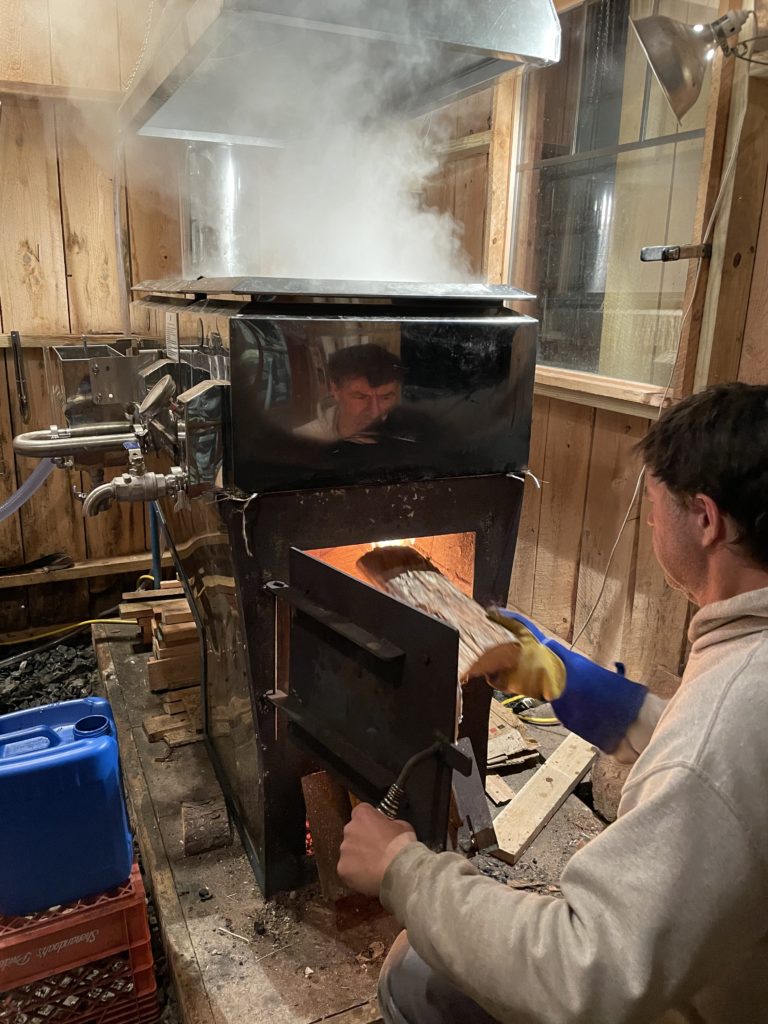
Maple Syrup, otherwise known as liquid gold, starts flowing from our maple trees during early spring. As the ground and trees start to thaw, this delicious sap gushes out and maple sugar producers celebrate. West Virginians have a long history of maple syrup making. The indigenous populations made syrup first by throwing hot rocks into hollowed-out logs that were filled with sap. The early settler quickly learned to make the sweet stuff and use it as their main source of sugar. Today, this unrefined and unprocessed maple syrup is ideal for brunches, baking, cooking, and barbecues imparting the flavor of this iconic ingredient. You can find this nutritious syrup in our diners, cafes, and specialty shops. Randolph County also has maple syrup producers that sell their products online and Still Hollow Spirits distillery seasonally carries a maple syrup infused whiskey.

Digging and eating ramps in the spring is a traditional activity throughout Appalachia and especially in the gateway communities of the Monongahela National Forest. Ramps are a member of the lily family which includes onions, garlic, and leeks. Ramps are known as the first green to appear during the spring season and are soon followed by other wild edibles like dandelion and poke weed. They are well-known for their strong odor as they are for their strong garlicky, onion taste. For generations, this wild edible has been harvested for personal and commercial use. Typically ramps grow in the moist, shady areas of northern-facing hillsides. Ramps have no bounds in the cooking world; toss them in bacon grease, eat them raw, sauté them with fried potatoes, pickle or can them, freeze them or use them in soups, scrambled eggs, or with beans and cornbread, or make ramp wine, jelly, and jam.
*If you want to dig and prepare this delicacy yourself and need inspiration, buy the Randolph County Ramp Cookbook available at the Elkins Depot Welcome Center. The cookbook is $7 if picking up, or can be mailed for $7.50. Call 304-635-7803 to order – cash or check only.
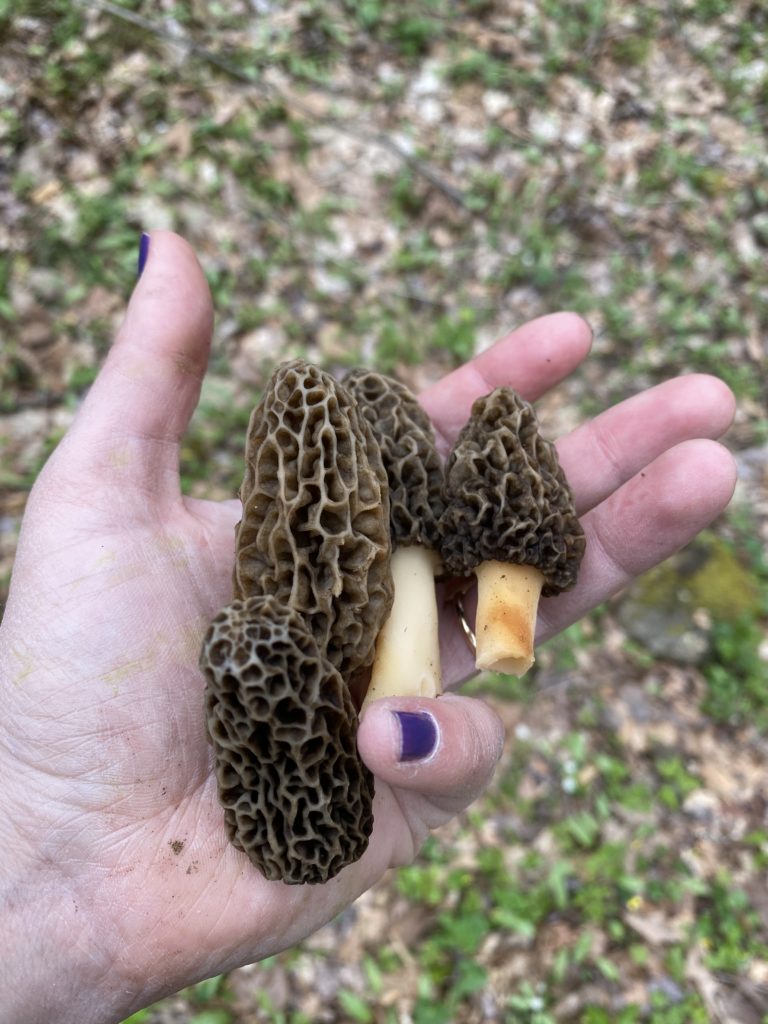
Mushrooms are some of the strangest things that humans eat. They are neither a plant nor animal, and many of them are deadly. During the wet season, mushrooms thrive. In our forests you can find wild puffballs, chanterelles, oyster mushrooms, chicken mushrooms, and possibly the tastiest but hardest to find of all, the morel mushroom. The elusive morel mushroom is a member of the genus Morchella family. This mushroom is easily recognized by the honeycombed top of the mushroom that has an outer-worldly appearance with a series of pits and ridges. If you are a novice mushroom hunter and are concerned about picking the wrong kind of mushroom and eating something poisonous, morels have a distinct, one-of-a-kind look, so chances for a mix up are slim, but it’s always best to ask a knowledgeable person if you are concerned. A spring hike through the woods holds the potential for stumbling upon these tasty fungi. You can often find them growing around the base of elm, ash, alder, apple, and oak trees. Known for their earthy, nutty flavor and meat-like texture, morels are typically cooked by searing them in butter just as you would any other mushrooms. Toss them on a burger, in your eggs, or just eat them plain. They really are that delicious.

Two of the most multipurpose and prevalent edible wild greens in West Virginia are watercress and dandelions. The aquatic watercress is pungent and fragile – because of its high-water content it doesn’t keep well after harvest. Watercress is a water-loving plant and is often found near streams and rivers so be on the lookout for this fresh, green salad topping while fishing or hiking. It is important to collect your watercress, or any other water-associated plants, from unpolluted areas so you don’t risk getting sick from a potential parasite. Although most consider dandelions a nuisance, you may be shocked to learn that they are actually a superfood. Every part of this flowery herb, from its roots to the bright-yellow blossoms, can be eaten raw or cooked. This quintessential weed is rich in vitamins A, C, and K. They also contain vitamin E, iron, calcium, magnesium, potassium, and B vitamins. The root can be used as a coffee or tea substitute, the leaves can be eaten as a salad or fresh green, the buds can be turned into capers, and the blossoms can be added to muffin and bread recipes.
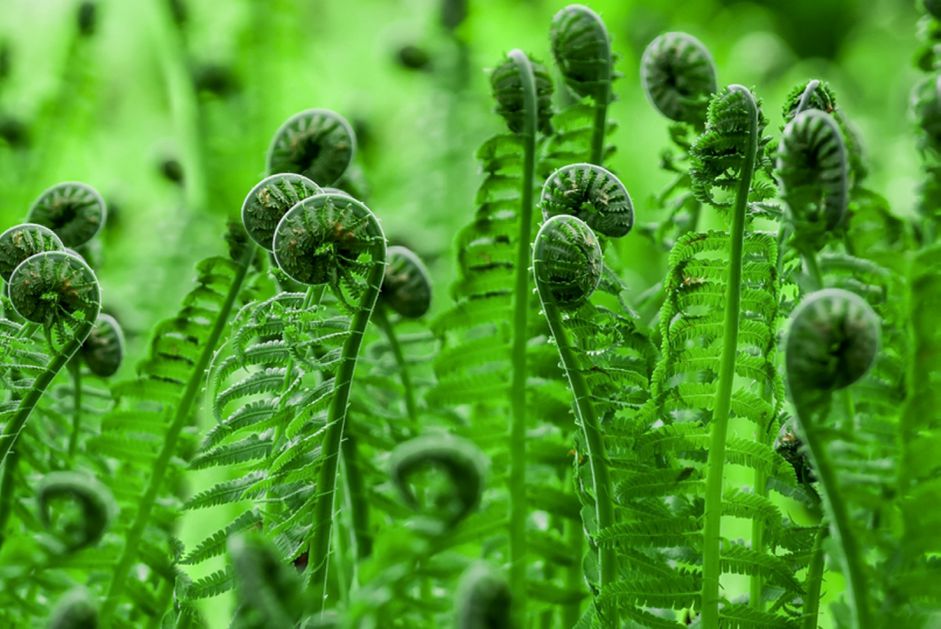
Spring brings to life plants that have been hiding beneath the frozen ground. Fiddlehead ferns, also known as an Ostrich fern, are among those plants. Popping up from the ground with curled green, fuzzy tips, these plants can be harvested before the tight coil has had a chance to unravel. Their taste is often described somewhere between asparagus, broccoli, and spinach. Unlike the dandelions that seem to grow everywhere, fiddleheads grow in wild and wet areas. They can be found near mountain streams, edges of the rivers, and swampy, moist areas. The most important note to keep in mind is you cannot eat fiddleheads raw or undercooked because they have toxins in them that can make you sick. You can cook fiddleheads like any other vegetable. They pair nicely with omelets, pasta dishes, soups, stir-fries, but also work well as an independent side dish.
We, by no means, are experts regarding this topic. If you are like us and do not have the time to search the woods for these edible delicacies, our farm-to-table restaurants offer wild food courses seasonally. If foraging through the woods to find these wild plants excites you, we recommend going with a knowledgeable guide the first few times to understand how to forage responsibly or ask an experienced herbalist prior to consuming. Happy spring and happy eating!
